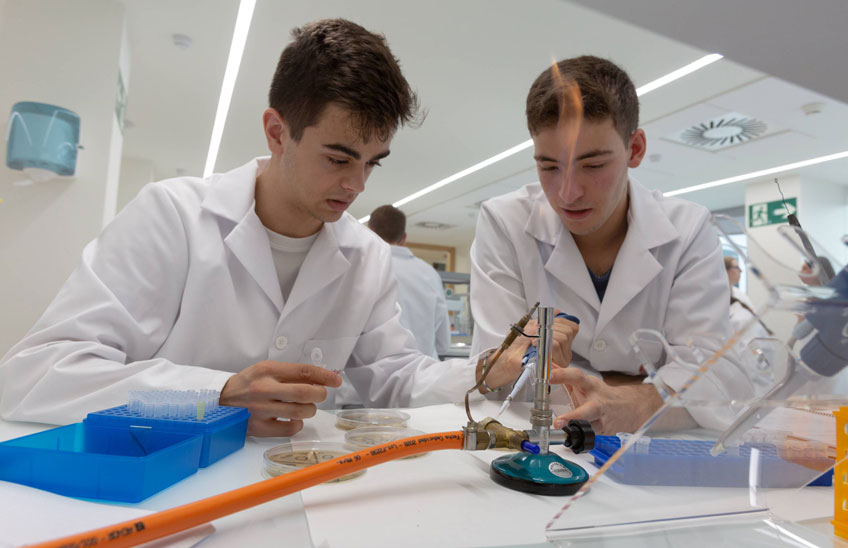Molecular Signals Identified in a Blood sample for Early Detection of Lung Cancer
Scientists from the Cancer Center Clínica Universidad de Navarra coordinate an international research that improves the sensitivity of liquid biopsy as a method of early diagnosis.

FotoManuelCastells -/Dr. Luis Montuenga, director of the Biomarkers group at Cima, and Dr. Luis Seijo, director of the Pneumology department of the Clínica Universidad de Navarra, coordinators of the study.
30 | 10 | 2025
An international research coordinated by the Cancer Center Clínica Universidad de Navarra (CCUN) has developed a diagnostic method for the early detection of lung cancer in blood samples. The study has identified a group of signals present in immune system cells that improve the sensitivity of liquid biopsy in the early diagnosis of these patients.
These are the first conclusions of the AIREproject , a lung cancer screening study that has collected samples from more than 750 high-risk individuals at the Clínica Universidad de Navarra and which have been analyzed in the Cima laboratories.
Liquid biopsy is a non-invasive technology capable of diagnosing different types of cancer through a blood test. However, it still sample limitations in detecting the disease in its early stages. "When a tumor develops, some cells of the immune system (lymphocytes) react to the cancer cells, multiplying and circulating in the blood. Until now, the lymphocyte was searched for a single tumor recognition signal. The novelty of this work is that we detect complete groups of signals (receptor repertoires), which are associated with the presence of cancer," explains Dr. Luis Montuenga. Dr. Luis Montuengadirector of the Lungsearch group , dedicated to lung cancer, at the Cima University of Navarra and co-director of the study.
These receptor repertoires can be identified by means of a molecular technique applied to blood analysis, which would open the door to very early detection of tumors in a non-invasive manner. Furthermore, combining this technique with other biomarkers, such as circulating DNA or specific proteins, would increase the sensitivity of this procedure. The results have been published in the scientific journal NPJ Precision Oncology, from the Nature group .
As indicated by Dr. Luis Seijodirector of the Pneumology department of the Clínica Universidad de Navarra and specialist in the Lung Cancer area of the CCUN, "these biomarkers can be useful in the context of screening, above all in three fundamental elements: in the characterization of the patient's risk and those nodules that can be detected by CT, in patient selection and, potentially, even in prognosis".




